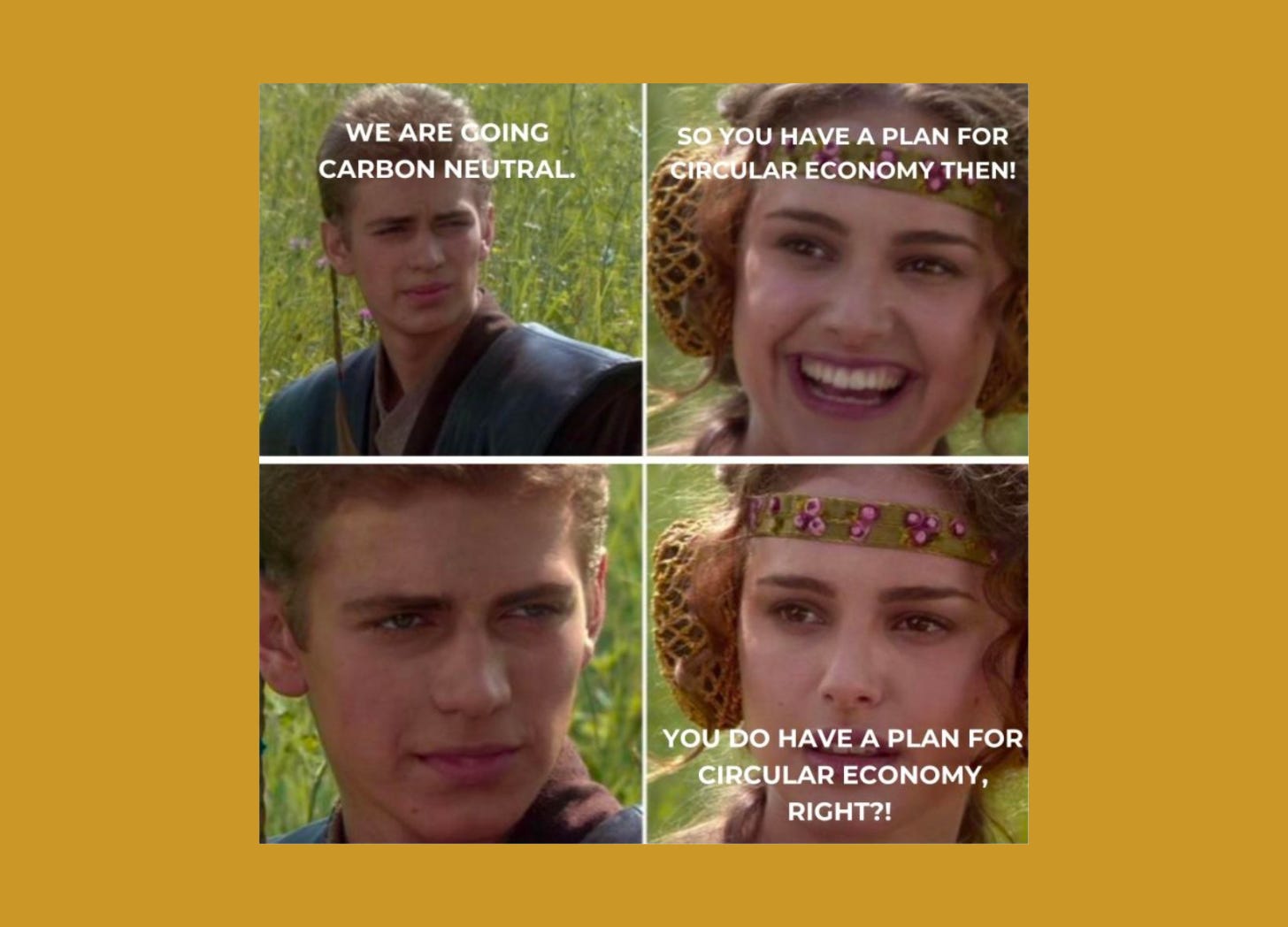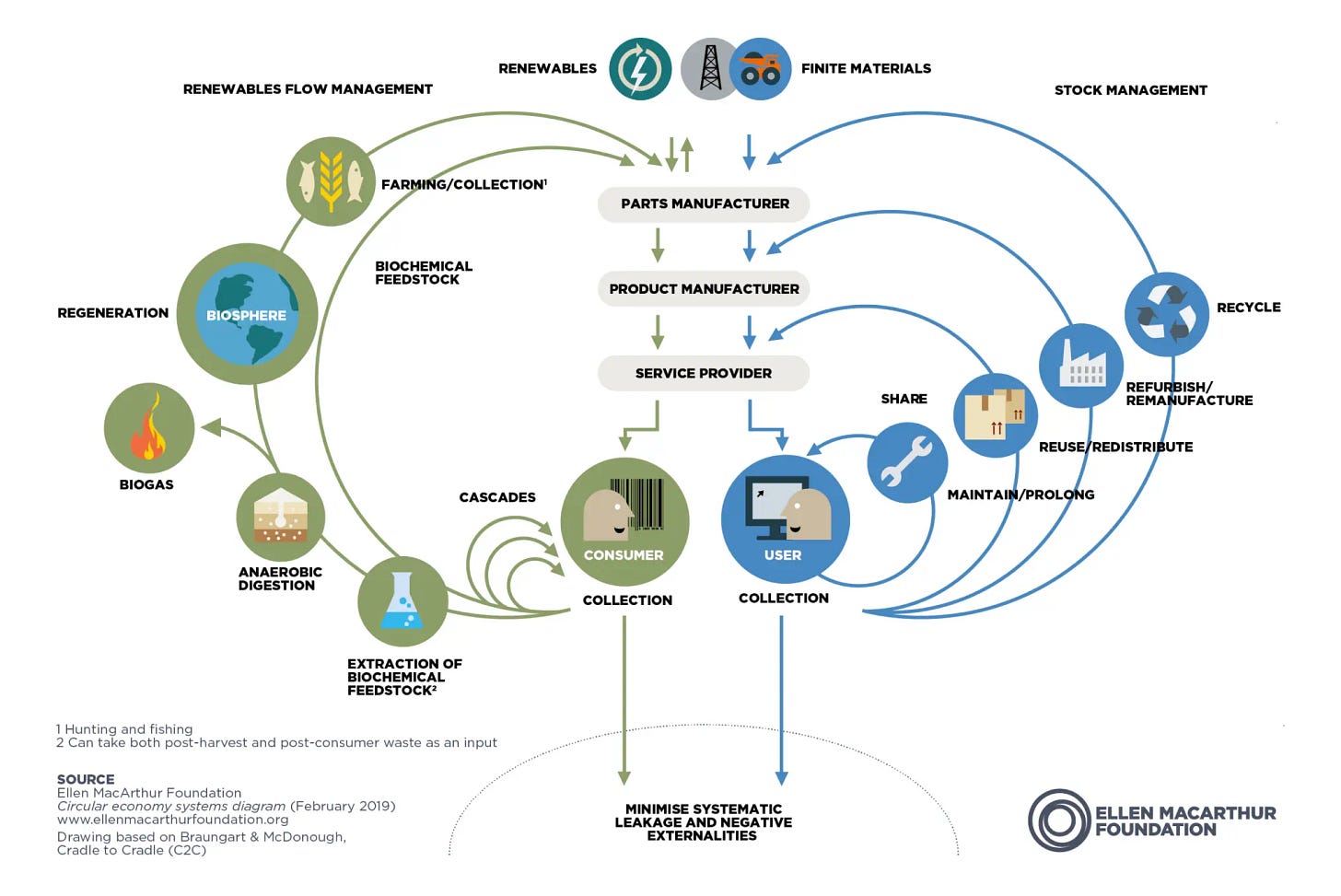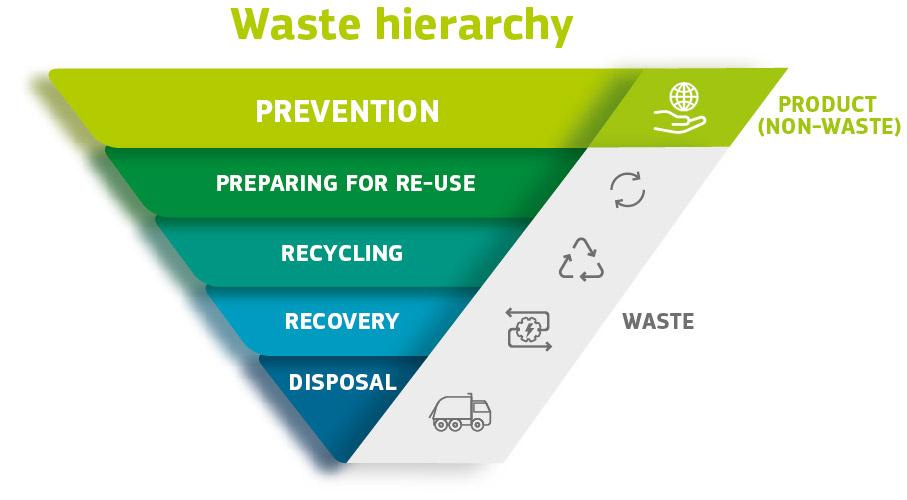Closing the loop: what is a circular economy and why you should care
Get started on your circularity journey with this quick guide

Welcome to SEArcularity!
If you’re wondering what brings you here, give our introduction post a quick read.
In our first newsletter, we’re going back to basics and giving you the low-down on what circularity is and what a circular economy means.
These concepts are increasingly becoming relevant in today’s hyper-capitalistic society where nobody bats an eye on fast-fashion hauls, single-use plastics, and buying the latest iPhone model when your current one is still completely functional.
We’ll loop you in on what these concepts are, why they matter, and resources you can circle back to in your journey of being a responsible citizen—which is to say, someone who gives a damn about leaving the world a better place.
What is a circular economy?
By definition, a circle is formed by one line that connects from one point to another.
In its verb form, a circle is “a group of people with a shared profession, interests, or acquaintances.” It conjures images of a contained infinity, an unbroken line that stays on its lane by being sufficient as it is.
In a metaphorical sense, a circle can be associated with boundaries, sufficiency, and a capability of being sustained by itself.
When it comes to the economy, the concept of circularity is the antithesis of how 21st-century society operates. With boundary-less KPIs and endlessly escalating targets, companies that rely on finite, natural resources function as if there is nothing to lose as they continue to exploit natural resources without respect for planetary boundaries.
This flawed mindset has brought the detriment of our natural resources today, causing crises such as overexploitation, overconsumption, and excessive pollution.
The Ellen MacArthur Foundation, founded in 2010 by former sailor Ellen MacArthur, created a diagram (shown below) of what a circular economy looks like.

The diagram above captures the essence of a circular economy, where everything has a purpose and nothing goes to waste.
“The circular economy is a system where materials never become waste and nature is regenerated. In a circular economy, products and materials are kept in circulation through processes like maintenance, reuse, refurbishment, remanufacture, recycling, and composting. The circular economy tackles climate change and other global challenges, like biodiversity loss, waste, and pollution, by decoupling economic activity from the consumption of finite resources.”
In simpler terms, a circular economy opposes throw-away culture in every sense, from the materials a product is designed with to its end-of-life. Unlike the linear model’s ‘take, make, dispose’ approach that contributes to pollution in seas and landfills, a circular model promotes recycling and repurposing products, ensuring a sustainable flow of resources.
That being said, the concept of circularity is all about designing for longevity, the reusing and sharing of products, as well as recycling, and repurposing to close the loop and avoid waste—notions that are in favor of sustainability.
Ultimately, a circular economy aims to reduce waste, minimize resource consumption, and lower environmental impact for a healthier planet and society.
Why is circularity crucial for a region like Southeast Asia?
A circular economy is vital for Southeast Asia since it addresses critical challenges like resource depletion, waste management, and environmental degradation, all of which are pressing issues in a region with fast-growing economies and populations.
Today, the region known for its abundant natural resources is facing a waste management crisis that can overwhelm local ecosystems.
Countries like Indonesia, Malaysia, the Phillippines, Thailand, and Vietnam grapple with both legal and illegal inflows of waste. This is exacerbated by inadequate waste management infrastructure, leading to ineffective utilization of waste as input for manufacturing.
As a result, waste volume has been increasing rapidly since 2000, reaching about 150 million tonnes in 2016. Projections suggest that by 2030, the amount is estimated to grow more than double. To illustrate this scale, this amount of waste would fill approximately 60,000 Olympic-sized swimming pools!
By adopting searcularity (wink), Southeast Asian countries can practice resource efficiency, reduce dependency on raw materials, and minimize environmental impact.
This approach can lead to an economic growth of $324 billion, creating 1.5 million jobs over 25 years, boosting innovation, and contributing to climate goals, particularly in sectors like manufacturing, agriculture, and tourism.
For example:
🇮🇩 In Indonesia, Waste4Change is a waste management service that promotes zero waste through recycling and education initiatives. They partner with businesses and communities to implement sustainable waste practices, including waste segregation and recycling programs.
🇵🇭 In the Philippines, ANTHILL Fabrics’ initiatives promote sustainable fashion through circular programs like the Zero Waste Program, the Weave Exchange, the Reweave Collection and the Rework initiative. These efforts collectively support a circular fashion model, minimizing environmental impact.
Why will a circular economy benefit us all?
Reducing waste: By implementing eco-effective designs and promoting sustainability principles, a product’s life cycle is extended and lessens the burden on seas and landfills.
Protecting the environment: Reduced waste and minimal production means fewer emissions and less pollution, which are needed for a healthy society and environment.
Boosting innovation: A circular approach inspires creativity and innovation (see: biomimicry), driving companies to find new ways to make products more sustainable.
Economic growth: A circular economy promotes efficient resource use and creates new business opportunities in recycling, repair, and remanufacturing industries.
What can you do as an individual who cares?
While implementing a circular economy requires policies from the top level, individual actions matter, too. Here are some simple ways you can contribute:
Rethink how, what, and when you consume
They say the most sustainable option is to not buy at all. Before buying something new, consider if you can repair or repurpose an existing item.

Keep in mind that refusal and prevention are the most crucial actions as these stop waste creation at the source, eliminating the need for further management and conserving resources.
Support circular businesses
If you must buy something new, make mindful consumer purchases by researching a company’s circularity initiatives beforehand.
Embrace secondhand and sharing
Opt for shared resources, like borrowing or renting items instead of purchasing them outright. You’ll save a lot of money in the process, too!
Recycle responsibly
Recycling isn’t seamlessly integrated into the waste management system in Southeast Asia. So, apart from minimizing your consumption, make sure to recycle materials properly by segregating and supporting local recycling initiatives.
Books you can read
🌀 "Cradle to Cradle: Remaking the Way We Make Things" by William McDonough and Michael Braungart
Written by two authors of different backgrounds, one as an architect and another as a scientist, this book contrasts the traditional "cradle-to-grave" approach with a circular model.
🍩 “Doughnut Economics: Seven Ways to Think Like a 21st-Century Economist” by Kate Raworth
This book offers seven insights that promote combining human prosperity with ecological sustainability, providing a framework for a redesigned economic system.
📉 Less Is More: How Degrowth Will Save the World by Jason Hickel
While this book specifically focuses on degrowth, the ideas presented are compatible with circular economy principles, as both advocate for a more sustainable and equitable future.
As we move toward a smarter and more mindful society, embracing circularity isn't just a fad but a necessity that has the potential to drive systemic sustainable change.
From rethinking your consumption habits and supporting circular businesses to educating yourself with sustainability concepts, every step counts in making a positive impact.
That being said: thank you for being here and staying in the loop with us!
‘Til next time,
Danna from SEArcularity
Found this issue interesting? We’d appreciate it if you could help us widen our circle by sharing our newsletter with your social networks! Comments are appreciated and welcome.


Great info! That meme made me laugh hah.